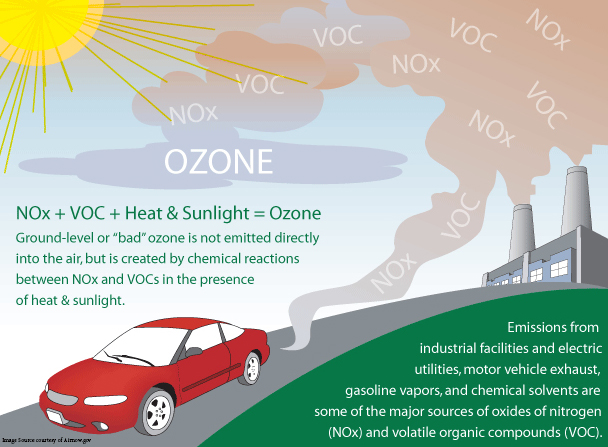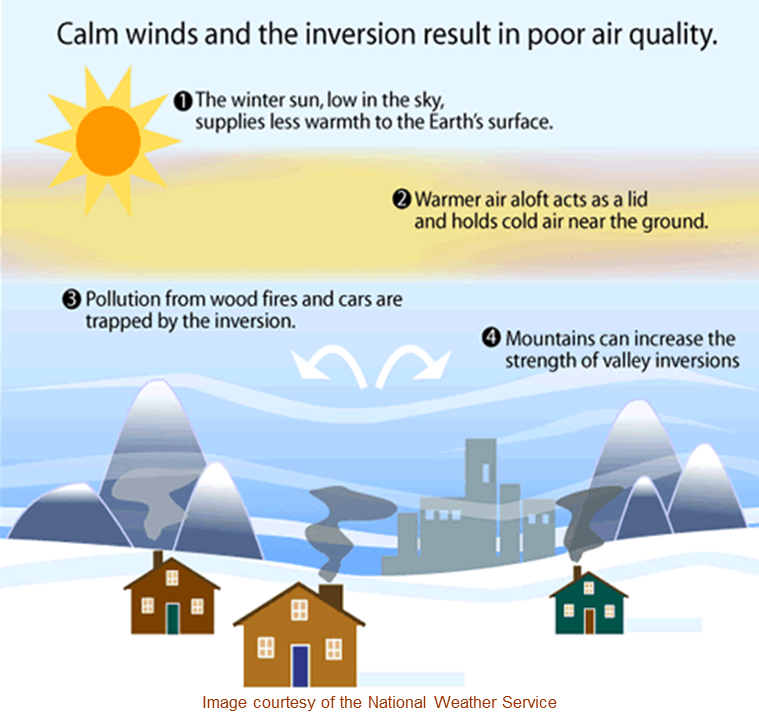Winter and Summer Pollution
Ozone is a created by the sun’s heat and light acting upon gases and pollution in the atmosphere. Ozone levels change throughout the day and are generally highest in the afternoon hours.
Exposure to high summer ozone levels can cause:
- Irritation to the eyes, nose and throat
- Coughing
- Wheezing
- Chest tightness
- Difficulty breathing

The Utah Departments of Health and Environmental Quality have developed recommendations for outdoor physical activity in the summertime to avoid unhealthy exposure to summertime ozone.
- The best time for outdoor summer physical activity is before noon or after 6:00 pm.
- If you are physically active between noon and 6:00 pm:
- Consider light to moderate activity (i.e., walking instead of running),
- Consider indoor activities.
- Discuss physical activities with your doctor, especially if you have a lung disease or heart condition.
During the winter, particulate matter (or PM) is the main pollutant of concern. PM is made up of soot, dust, and vehicle emissions. It is measured in two sizes, 2.5 and 10.
- PM10 can usually be filtered by nose hair and lung cilia and coughed out.
- PM2.5 is a bigger concern because it is small enough to get past the body’s natural defense systems. When breathed in, PM2.5 can get deep into the lungs where it becomes trapped, aggravating current health problems like asthma.
PM levels increase during Utah’s Inversions. Inversions form when the right weather conditions—cold temperatures and no breezes—cause the cold air and pollution to become trapped in the valley.
An inversion will stay until wind or a storm front comes through. The longer the inversion lasts, the more pollution there is in the air.

- Outdoor Air Quality and Asthma - Recommendations for outdoor activity based on ozone level.
- Symptom Tracking Sheet - A sheet to assist in tracking ozone levels and your symptoms to plan physical activity.
- Click here for the average number of high ozone level days throughout the state of Utah
- Click here for the average number of high ozone level days along the Wasatch Front.
